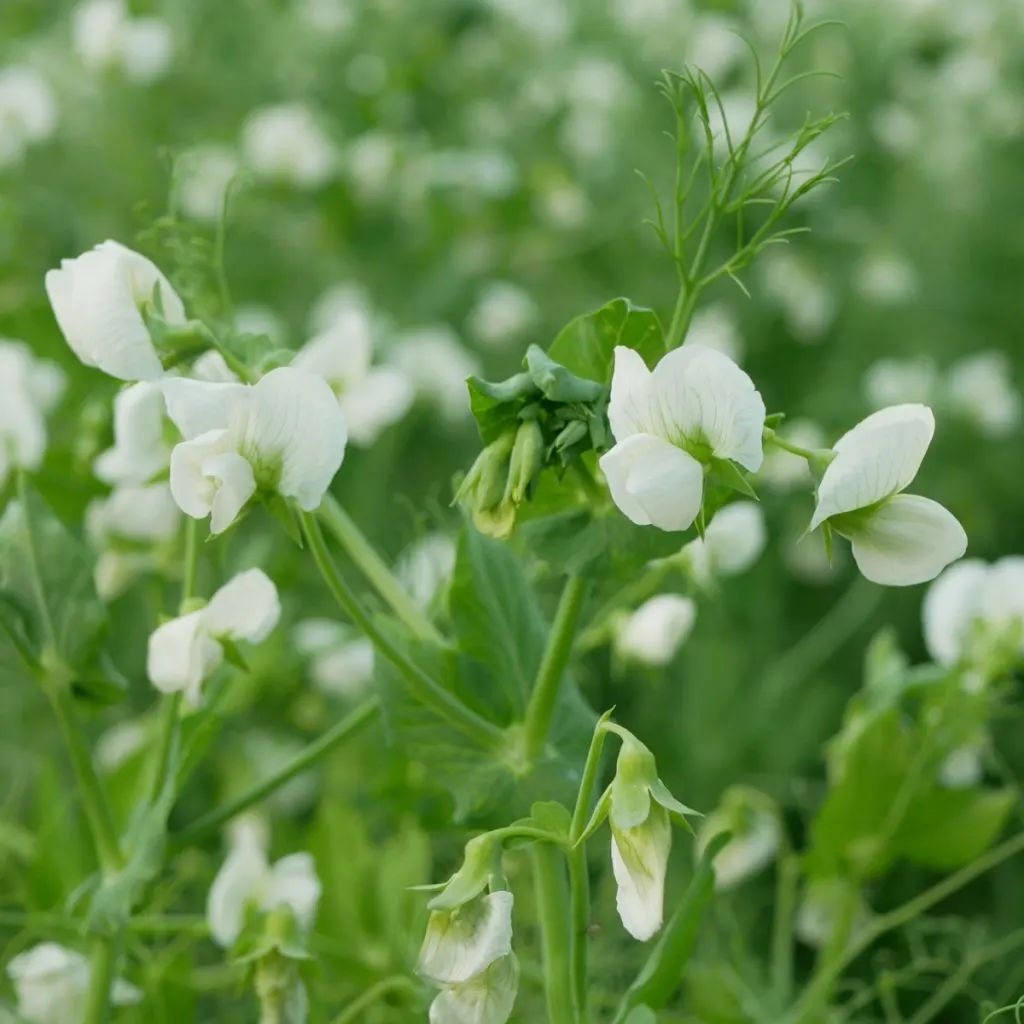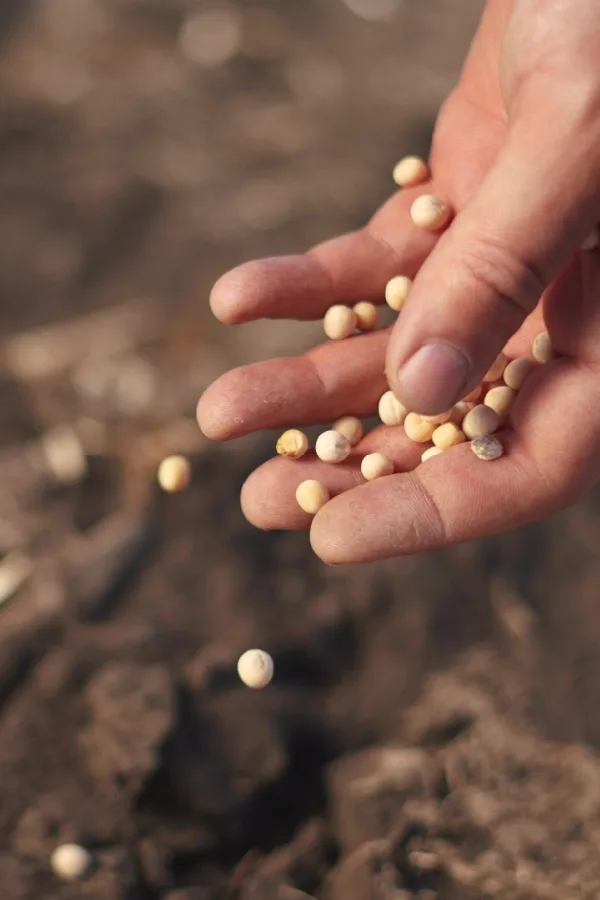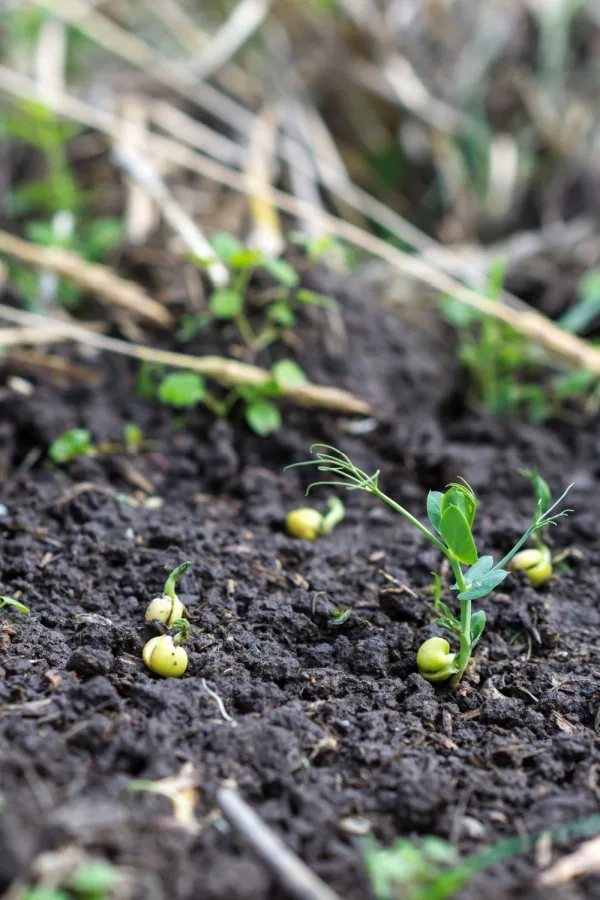If there is one thing you can do to help out your garden soil this fall and winter, it’s planting a cover crop – and one of the best cover crops to plant are field peas. Not only are they easy to plant and perfect for recharging your soil – you also don’t have to spend time tilling them in next spring!
Cover crops are one of the best ways to protect and revitalize tired soil in the fall. The fast-growing crops fill in quick to protect the bare soil in your garden. They are wonderful for helping to stop weeds from growing and prevent soil erosion, all while adding loads of organic matter back into the soil.
In addition to helping hold the soil together, cover crops help to aerate the soil and make more compact soils less dense and hard.

Although there are several great cover crops to choose from, what makes field peas stand out is that they are extremely easy to plant – and even more, as you will see below, they are one the best nitrogen-fixing cover crops of all!
How To Plant Field Peas As A Garden Cover Crop
The Advantages Of Planting Peas
One of the biggest reasons for using field peas as a cover crop is their ability to help fix the nitrogen levels in your soil.
Nitrogen is a nutrient that is vital for plants and flowers to grow properly. Without it, plants simply don’t have enough energy to grow and maintain blooms or vegetables. Most plants that grow in nitrogen deficient soil struggle to grow, let alone produce flowers or vegetables.
Field peas are not the sweet peas you grow in your garden to harvest. They are instead a part of the bean family. The peas they produce taste much more like a bean than they do a sweet English pea. But they are amazing as a cover crop!
How Field Peas Help Your Garden Soil – How To Plant Peas As The Perfect Garden Cover Crop
So how do field peas help replenish nitrogen? As they grow, they work to naturally absorb nitrogen from the air. The nitrogen then gets transferred to the soil when the peas are cut down or turned into the soil. All without the need to add chemical or artificial fertilizers.

Another big advantage of using field peas is that they are a very cold hardy cover crop. This makes them great for growing in locations that have winters that reach below freezing. Affiliate Seed Link: Austrian Field Pea Cover Crop Seeds – 5 Lbs Nitrogen Fixing Legume Cover Crop
The plants will continue to germinate and grow until freezing temperatures occur. Once they do, the plants go dormant until the early spring weather warms the soil and growth begins again. All of this happens naturally without the need for you to intervene. And are they ever easy to plant!
Preparing The Soil – How To Plant Peas As The Perfect Garden Cover Crop
The best time to plant field peas are about 4 to 6 weeks before your first expected frost. This time frame will allow the seeds to germinate and start growing before the colder weather arrives.
Field peas aren’t very particular about what type of soil they grow in as long as the soil is well draining. All they really need is a bit of water now and then along with at least six hours of direct sunlight each day.
Begin by removing any leftover plant materials that might be sitting on the soil from your summer garden. Lightly rake the top inch of soil to break it up for planting. Once the soil is loose, cast the seeds out by hand or use a broadcast seed spreader if it is a large area. The seeds don’t need to be perfectly spaced apart.

Finish by gently raking the seeds to help set them into the soil. You just want to ensure that seeds are at least partially down in the soil the slightest bit. If you do still happen to have some plants growing in your garden, you can simply sow the seeds around their stems. Once sown, mist the seeds into the soil to help set them even more.
Caring For The Peas In Late Fall And Winter – How To Plant Peas As A Garden Cover Crop
Pea seeds should germinate in about 10 days. However, if your fall temperatures are cooler, it might take a week or two longer. Keep the soil evenly moist but avoid over saturating the soil with too much water as it can rot out the seed.
The plants will go dormant once freezing temperatures arrive. When this occurs, you can stop watering. Don’t be surprised if the growth is a bit sparse at this point. The plants will fill in much more once spring arrives.
As early spring arrives and the soil starts to thaw out, the field peas will start to grow fast. Start watering the plants again, but do so deeply to help encourage the roots to grow deep into the soil. The deeper the roots grow, the better for your soil!

Early Spring Care – Plant Peas As A Cover Crop
About three to four weeks before you want to plant your garden, you will need to terminate the crop. Once the plants begin to flower, they have reached their maximum amount of nitrogen. If possible, wait until this occurs before killing off the plants.
Although you can till the crop in – the easiest method is to go the no-till route and mow the plants down short with a mower or using a weed eater. The latter works well for raised beds or smaller growing spaces.
Leave the mowed-off plant matter where it lands to add green mulch as well as organic matter back to the soil. There is no need to pull up the roots. In fact, you should leave the roots where they stand. As they break down, the roots will add nitrogen back to the soil. For more fall gardening ideas, see: How To Plant Garlic In The Fall – And Why Fall Is The Best Time To Plant It!
No matter how you go about it, planting and growing peas as your cover crop is an excellent way to protect and recharge your soil, all while adding loads of nitrogen back into the soil! See our article: The Best Cover Crop For Raised Beds – Growing Oats!
This Is My Garden
Follow Our Facebook Page For Great Gardening Tips And Advice! This Is My Garden Facebook Page
This Is My Garden is a garden website created by gardeners, for gardeners. Jim and Mary Competti have been writing gardening, DIY and recipe articles and books and speaking for over 15 years from their 46 acre Ohio farm. They publish three articles every week, 52 weeks a year. Sign up today to follow via email, or follow along!
